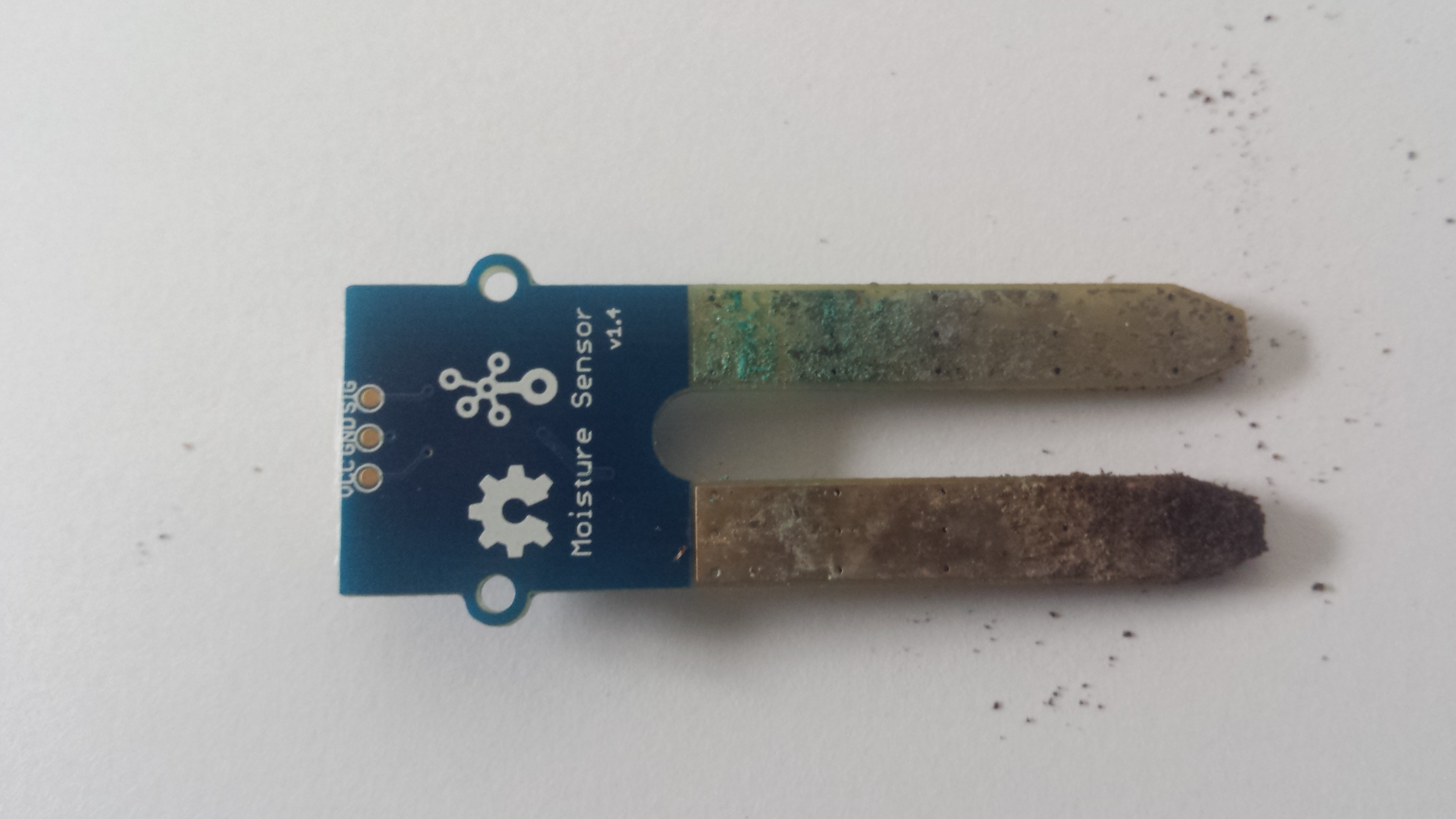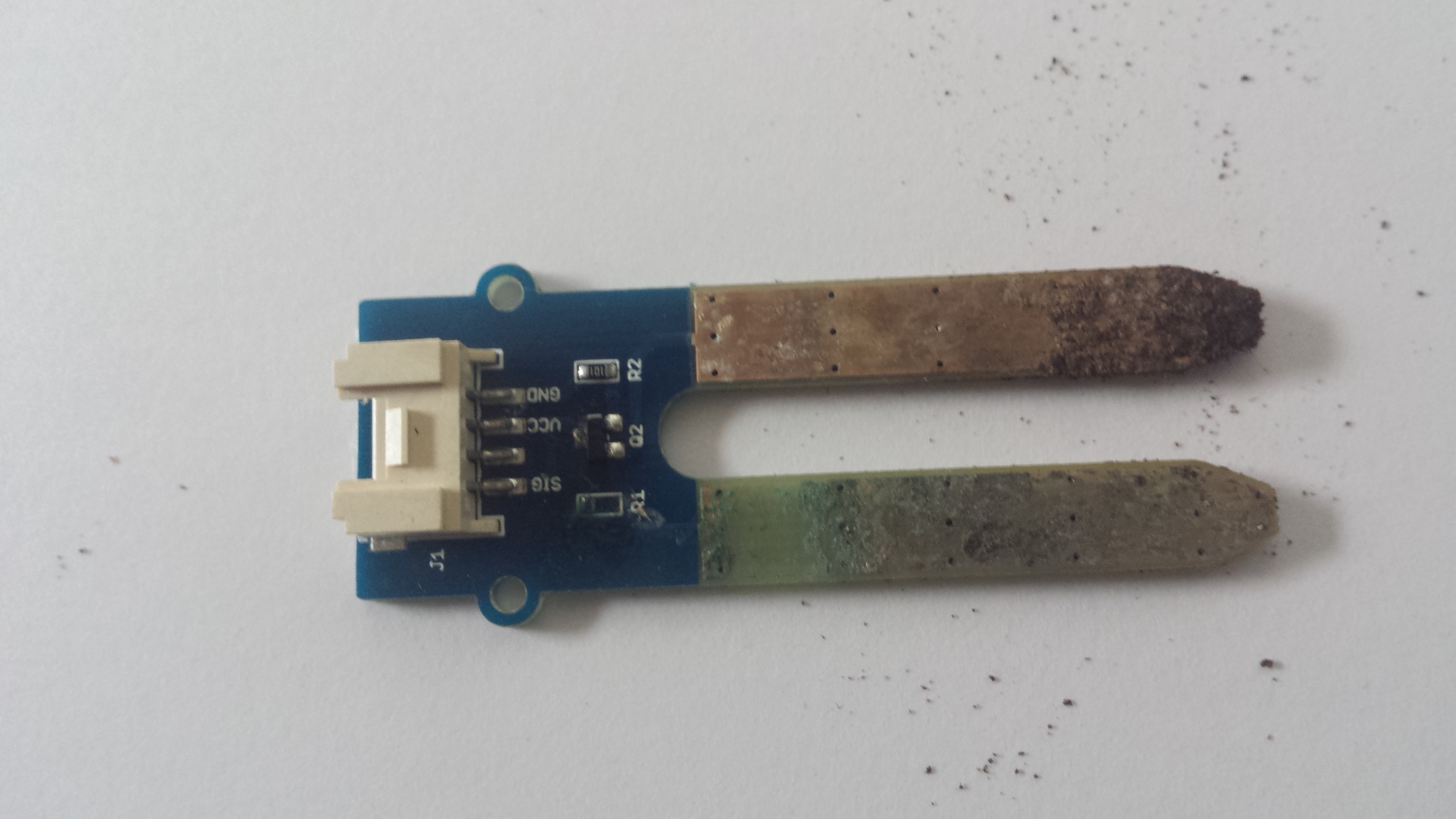Months ago I started some experiments using the moisture sensor.
Then I had to stop for many reasons and then I did try to restart some tests.
I noticed some problems reading the moisture sensor and I wonder if what I’m reporting is a common knowledge about that sensor.
Basically the copper on one side of the sensor disappeared.


I did assume who designed the sensor knew that a moisture sensor MUST never use a direct current exactly to avoid the corrosion of one side.
Apparently is not the case.
Steve
Could the sensor just be junk or consumable?
For what I know so far I would say is junk.
I’ll try to see if the sensor can be modified or controlled in different way to avoid the corrosion for electrophoresis.
Here’s your answer.
That link is the page on seedstudio for the sensor. It says in the description that you should only use it for prototypin because the is prone to corrosion. There you go. So they did say it would corrode so… Still…
Yeah, really bad.
Still it does not make any sense to me, with this kind of design you will always have corrosion and what the point to design something you know it will fail ?
I saw some capacitor sensors, will try to adapt one of these to the Grove system.
I could maybe use an ADC module to read the value from the sensor, or maybe there is some other module I can use to interface that kind of sensor.
Thanks
What if you gold plated the sensor?
no, the problem is the electronic for this sensor.
It’s a transistor mount on class A. And 1 resistor is the ground with the humidity on it.
So the current is only DC. If you want a good sensor, you must choose an sensor with a technology AC and not DC.
But this sensor is very simply to use with the students and very cheap. And you can’t use this sensor for a long time.
But for a long time, you can use this:
http://www.vegetronix.com/Products/VH400/
Still electrophoresis will happens.
Interesting, but in the FAQ they didn’t say if their sensor corrode after time.
At this point I’m evaluating a capacitive sensor solution.
Thanks
Hi @TheFwGuy,
I’m sorry for you to have encountered such a situation.
The only thing we can do about this is to add a quick note on our product’s website saying that the moisture sensor is not corrosion resistant.
It’s quite usual to see more emphasize put on the product’s qualities than on it’s shortcomings.
What I can think of for now is for you to buy a corrosion resistant sensor like this, desolder the existing connector and then try to replace it with a Grove connector. I’m not sure how the pins’ alignment would go, but this would be the first thought I’d have.
Thank you!
This topic was automatically closed after 33 hours. New replies are no longer allowed.

